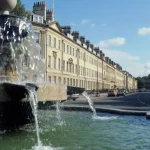Bath: a unique Georgian gem
Bath has been welcoming visitors for over 2,000 years. Designated by UNESCO as a World Heritage Site, the city presents some of the finest architectural sights in Europe, such as the Roman Baths and Pump Rooms, the Royal Crescent, Pulteney Bridge and the Circus.
The surrounding seven hills, the River Avon running through the heart of the city and the towers of the Abbey combine to create a wonderful first impression. Moreover, the city takes a real pride in sharing its secrets and unique heritage, which can be explored in a variety of 40 or so museums, galleries, gardens and attractions. Yet the city is very much alive and offers an intriguing mix of theatre, festivals, good restaurants, sporting excellence and quality shopping.
About 69 Great Pulteney Street, Home of the Windsor
The Windsor has a long and varied history. It has been owned by a number of individual families through the 19th Century, such as Milsom and Elliott, whose names are imprinted on the landscape of Bath. Around 1935, the premises were converted into four flats before being purchased by new owners in 1979, and converted to a bed and breakfast. The building passed to the current owners in 2007, who have retained wherever possible the original Georgian and Victorian features associated with these magnificent houses.
Located on the former Bathwick Estate, the façade of each of the buildings of Great Pulteney Street were designed by a prominent architect of the day, Thomas Baldwin. Built on former marshland, number 69 is one of 75 houses that form Great Pulteney Street, reputed to be the longest boulevard of its kind in Europe.
The Estate was originally owned by William Pulteney, a well known gentleman and MP who resided in London. Sir William agreed with the Bath Council that he would develop the area on the condition that he was allowed to bridge the river at what is now Pulteney Bridge.
Once the façade was built to the architects design, each house was developed by speculators who may have purchased up to 10 different plots. Although the majority of the house interiors are very similar they do have their own quirks. Today this has allowed the city to maintain its architectural history while maintaining each house as living buildings, whether as flats, town houses, hotels or small and thriving businesses.


